Are you wondering how to write a chef’s resume? Your resume is your first opportunity to impress potential employers and show them why you are the best candidate for the job. A well-written resume can be the difference between receiving a call for an interview or being overlooked. This Chef Resume Example and Writing Guide will walk you through the process of creating an effective resume that will help you get your foot in the door when applying for roles as a chef. Whether you are looking to switch careers, start a new job search, or want to update your CV, our expert tips and advice will guide you through the entire process. Keep reading to learn more!
Chef Resume Example and Writing Guide
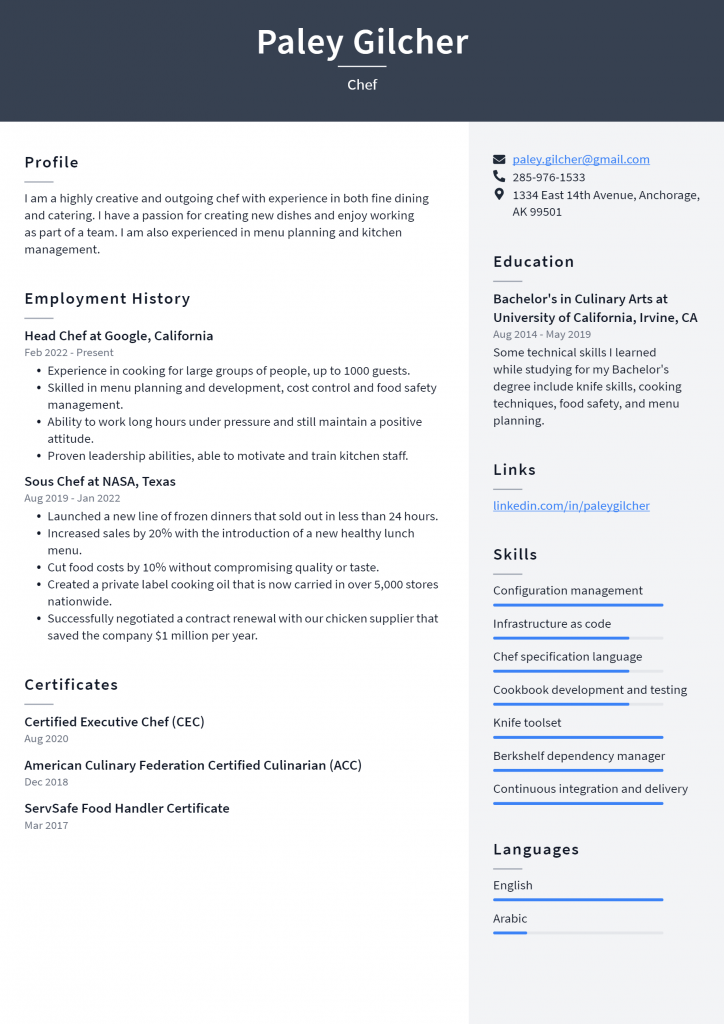
Download This Chef Resume as PDF
Busser Resume Example

Download This Busser Resume as PDF
Line Cook Resume Example
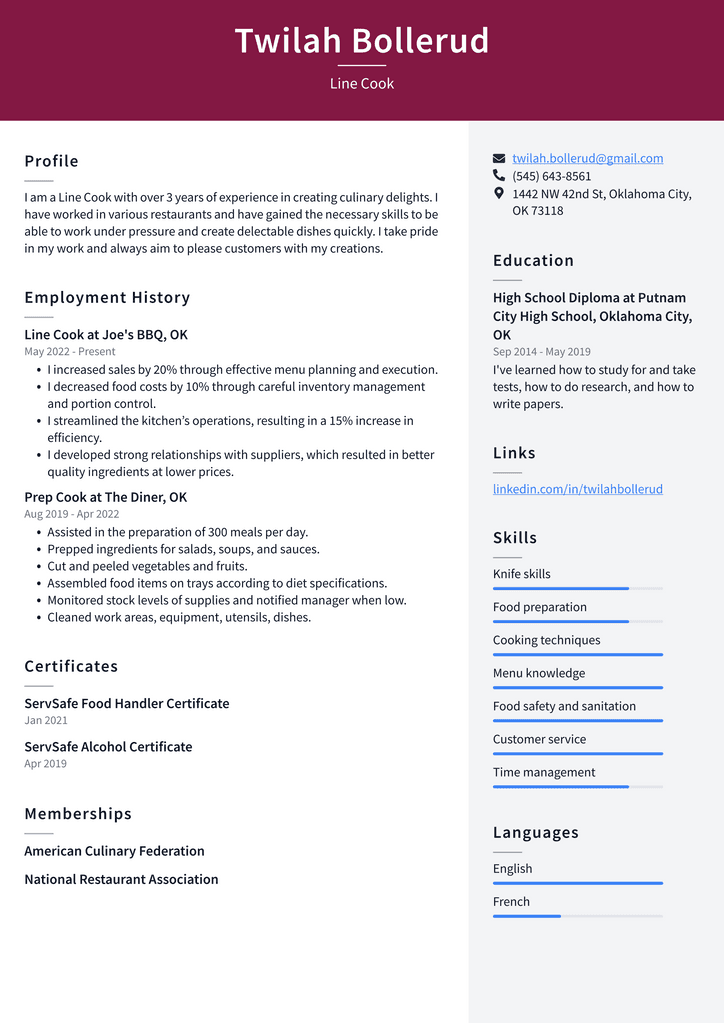
Download This Line Cook Resume as PDF
Prep Cook Resume Example
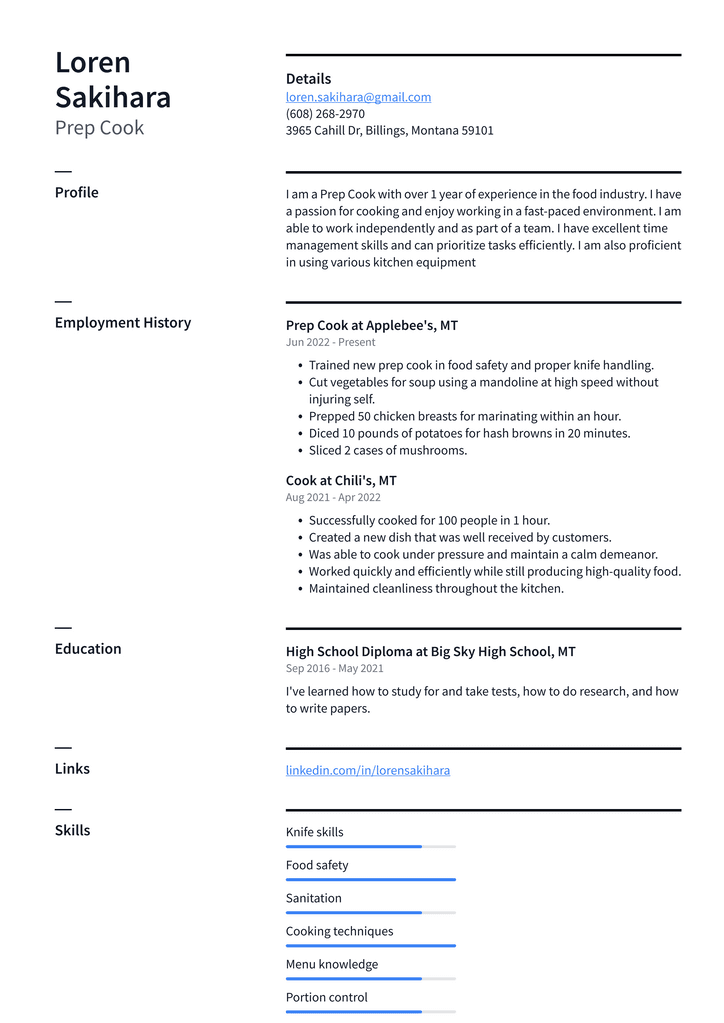
Download This Prep Cook Resume as PDF
Server Resume Example
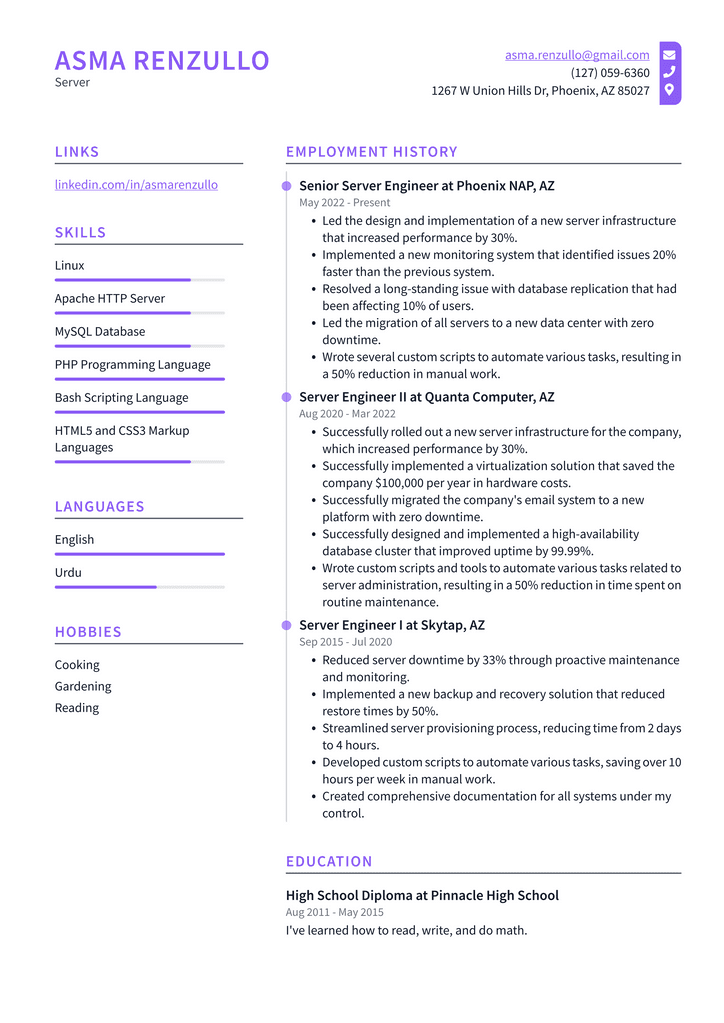
Download This Server Resume as PDF
Dishwasher Resume Example
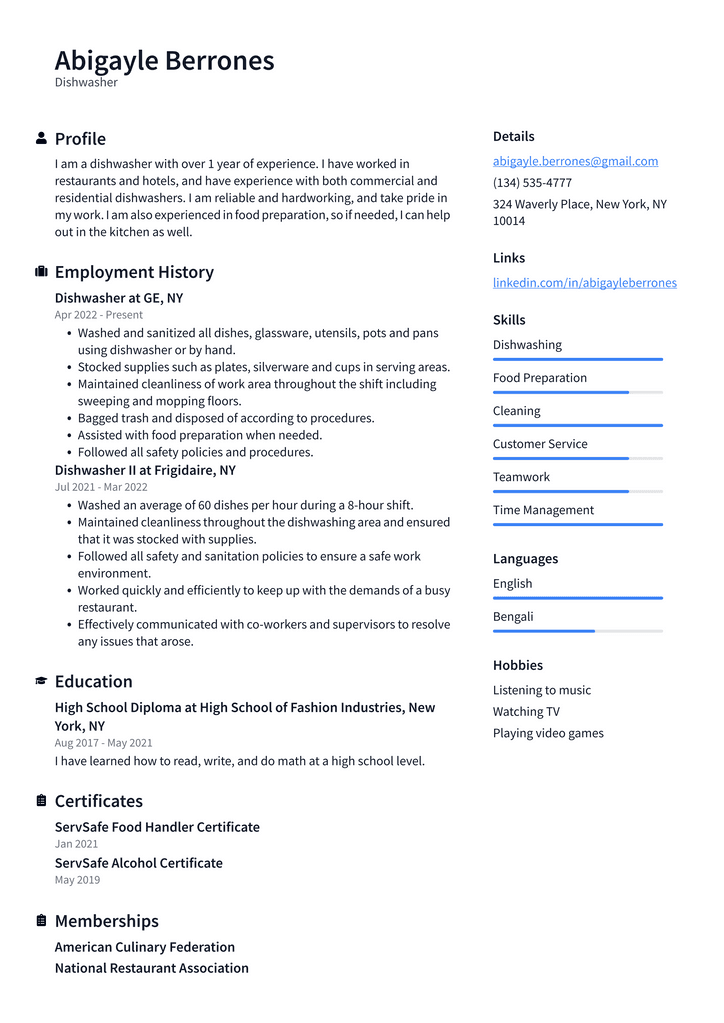
Download This Dishwasher Resume as PDF
Sous Chef Resume Example
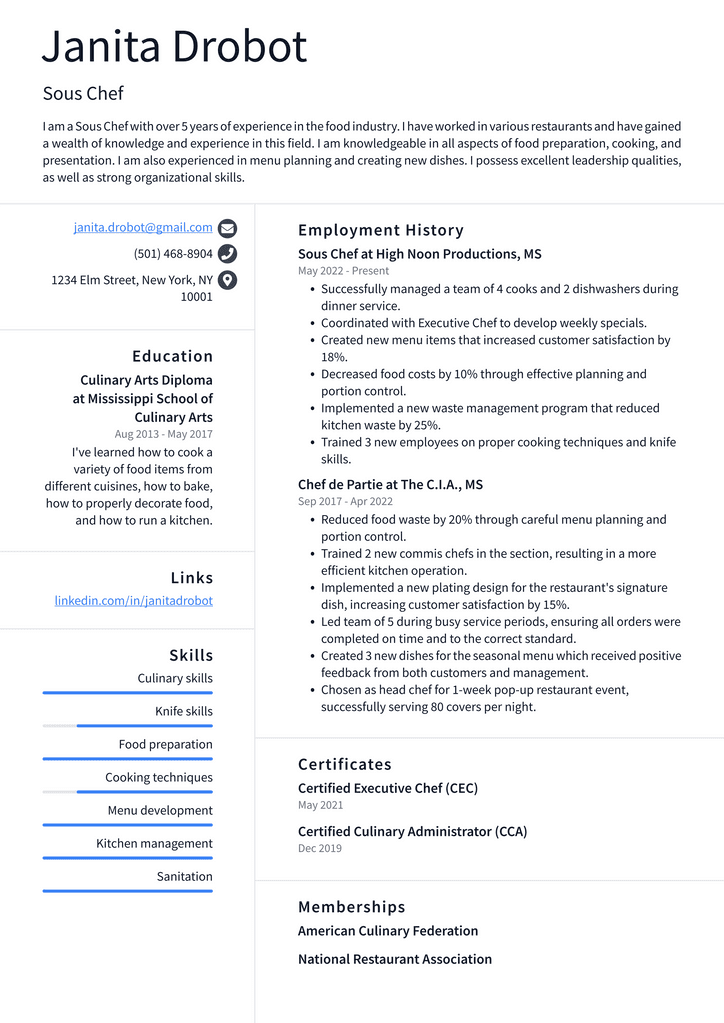
Download This Sous Chef Resume as PDF
What to Include in Your Chef Resume
When writing a chef’s resume, it’s essential to include all the relevant information that hiring managers are looking for. Therefore, your resume should include: – Your name and contact information. – A profile or summary that highlights your relevant skills and experience. – Education details, including any qualifications or specializations. – Work experience, including job titles and business names. – Awards and honors, if applicable. Regarding the layout of your chef resume, you have two main options: the standard reverse-chronological resume or the skills-based CV. – The reverse-chronological resume is your standard CV layout. It starts with your current or most recent position and moves backward through your career, ending with your education details. – The skills-based CV focuses on your strengths and what you can offer a potential employer, as opposed to a chronological timeline of your career. – Skills-based CVs are particularly well-suited for chefs and other professionals in the food and beverage industry.
Build a Great Resume
If you are applying for a chef position, your first step is to build an excellent chef resume. Your resume is the first thing hiring managers will see when reviewing your application, so making a solid first impression is essential. – Ensure that your chef resume is error-free. Get someone else to proofread your chef resume, or use an online editing tool to scan your document for grammatical or spelling mistakes. – Create a visually appealing chef resume. Ensure your chef resume is formatted correctly, using Times New Roman font (12pt), 1-inch margins, and standard font size. – Tailor your chef resume to the role you are applying for. Make sure that the bullet points on your chef resume reflect your skills and experience relevant to the job you are applying for. – Include an objective statement. An objective statement is a short introductory paragraph that highlights your skills, experience, and the type of job you are looking for. – Include a level of experience section. If you’ve worked in the industry for an extended period, deciding how much detail to put in your chef’s resume can be challenging. To distinguish yourself from other applicants and demonstrate your worth, include a level of experience. This can be in bullet points detailing your responsibilities, achievements, and work history. – Include a work experience section. The work experience section is where you list your previous jobs and responsibilities. Make sure to include the names of the business and dates of employment, and any relevant experience.
Education
The next section of your chef resume should be your education. Include the name of any culinary or hospitality-related education you’ve completed, including course names, dates, and certificates or degrees awarded. If you are currently studying, you can put “In progress” next to the name of your degree. Make sure to update it once you’ve received your qualification.
Experience
The experience section of your chef resume will detail your career history. Include the names of each business you’ve worked for and the dates you were employed at each. If you want to highlight a particular skill or experience relevant to the position you are applying for, include a short description of the craft and how it applies to your role.
Skills
The skills section of your chef resume is where you can showcase your specialty skills, such as proficiency in specific systems or software, language skills, and special certifications. Use bullet points to break down each skill, listing what it is and why it is relevant to the position you are applying for. If you have a rare skill or qualification, such as specific language proficiency, it might be worth adding a special note to let employers know.
Conclusion
Finally, make sure to end your chef’s resume with a conclusion. This is the place to summarize your most important skills and include a call-to-action, such as asking the employer to consider you for the role. If you’re looking to change careers or start a new job search, the best way is with a new, up-to-date chef resume. Your resume is your first opportunity to impress potential employers, so it’s essential to ensure it’s as effective as possible. With these chef resume tips and a little guidance, you can create a compelling CV that will help you get your foot in the door.